15 Stories That Remind Us to Stay Kind, Even When the World Isn’t


Better buckle up because you’re about to explore some of the world’s riskiest and nerve-racking roads. You’d better pack some water and snacks and prepare for exquisite views and extreme weather. And, most importantly, no matter what you do, don’t look down!
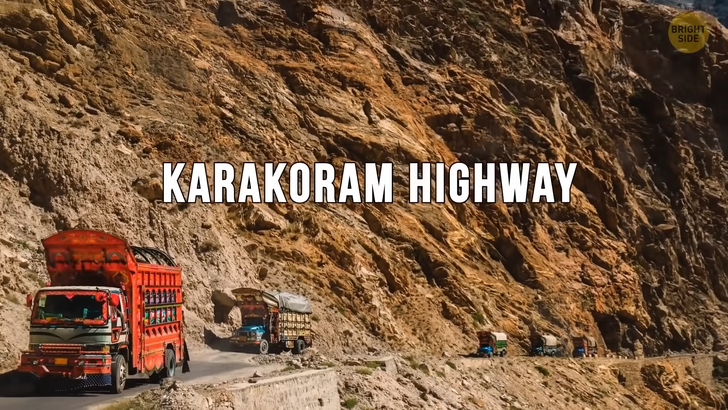
Let’s start with the Asian Karakoram Highway — the highest paved road in the world! It’s located at 16,000 feet above sea level. It also stretches for more than 800 miles! If you’re a history fan, you’ll be pleased to know it follows parts of the old Silk Road — an ancient trade route that connected Asia with the West. People used the road to carry goods and ideas between the two great civilizations.
As it splits the most mountainous region in the world, the Karakoram Highway is quite unpredictable. Rocks can often fall here, and there are also a lot of landslides, avalanches, and floods. When you take into consideration heavy snowfalls and herds of wild animals, you might decide to avoid the road altogether if you’re not the most skilled driver.
Not a fan of storms, either? Yeah, you really shouldn’t be here, trust me! The construction of this road began in the 1960s, and it’s a popular tourist attraction these days. Given the altitude and lack of road barriers, many visitors also experience altitude sickness here, which can make driving even riskier.
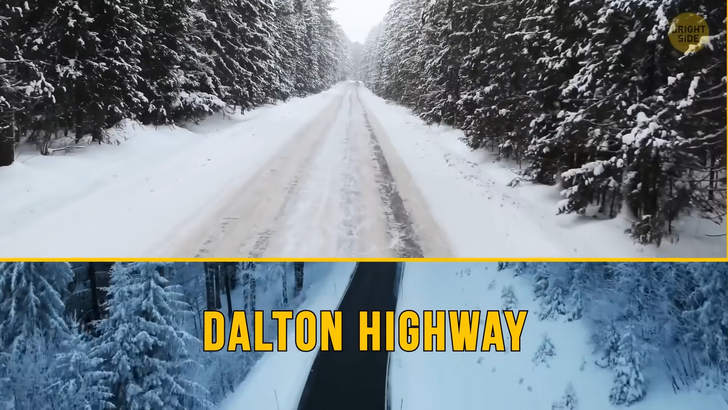
The Dalton Highway in Alaska isn’t a walk in the park either. For starters, at times, it gets slippery, which can give a headache to even the most experienced of drivers. The 400-mile-long road stretches through remote forests and over the Yukon River.
Since there are only three towns along the road, people who need to drive on the Dalton Highway are strongly encouraged to bring their own gear and lots of supplies. The road has a 240-mile stretch with no gas stations, restaurants, hotels, and whatnot. It’s the longest stretch of road with no services in North America. What makes the highway even more difficult to travel on is that most of the road is made from gravel. In the winter, it gets even more complicated since the road becomes a lot more slippery.
The North Yungas Road is thought to be the world’s most dangerous! Why? Maybe because it’s a single-lane, dirt road? Most probably! It connects the cities of La Paz and, stretching along the side of the Cordillera Oriental Mountains. Should you ever feel the need to look over the edge here, you’ll be astonished to see that the ground is really far away — 4,000 to 15,000 feet down.
The road was built in the 1930s. Its widest part is 12 feet. Width aside, people driving here often have to deal with thick fog, heavy rain, and even some loose rocks every now and then. Add limited visibility and more than 200 hairpin turns to the mix! As scary as it sounds, this famous route is still one of the most popular tourist attractions in Bolivia.
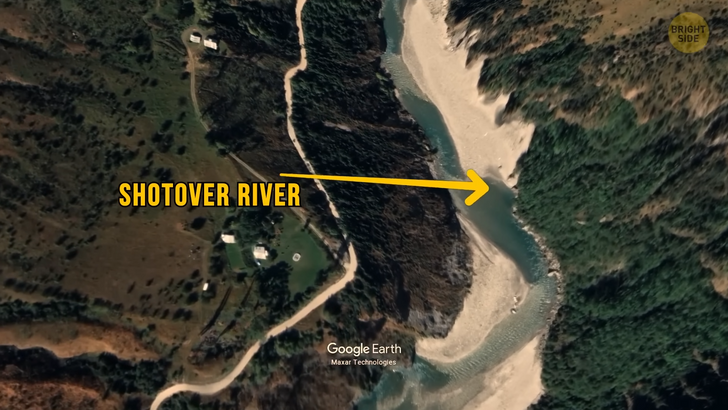
Heading over to New Zealand! You’re about to visit a 140-year-old unpaved road carved into the side of a mountain! It’s so dangerous that you have to get a special permit to drive on it. And don’t even think about renting a car, as most rental companies won’t allow their vehicles to go to that area. And the standard insurance won’t cover any issues you might face there. Bummer.
This narrow road goes almost vertically to the Shotover River. So, if you come across another vehicle on the way, you certainly won’t be able to pass each other. You’ll most likely need to reverse for up to 2 miles to reach a wider part of the road. Local tour operators can take visitors up the canyon if you’re really eager to visit the area. Most people are. Why? Well, because this road was a popular backdrop for a lot of movies.
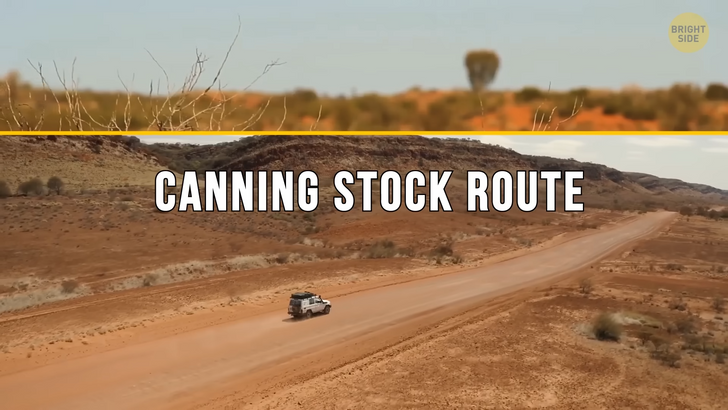
Looking for some peace and quiet? The Canning Stock Route might be just the place for you! You won’t get any views here, just a lot of dust and barely anyone around. Not to mention there aren’t many road signs, and it’s really easy to get lost here. This completely secluded road stretches for 1,150 miles. You can find it in Western Australia.
You’ll need 3 weeks to drive it from start to finish, so it’s best if you book yourself some time off work if you really plan on visiting. Just don’t start your journey in the summer months as the temperatures there can be almost unbearable. Don’t forget to pack plenty of food, water, and spare parts. And, most importantly, don’t drive alone! You’d better follow a convoy of experienced drivers.
Not all of the dangerous roads in the world are located on the edges of mountains or in a desert. Some seem quite unremarkable at first glance, like Commonwealth Avenue in the Philippines. At first glance, it’s a regular highway that is a mere 7.5 miles long. But it has eighteen lanes and a lot of heavy traffic!
It also gets flooded pretty often because of the poor drainage system. And since motorbikes and pedestrians often cross the road in the most unexpected places — whoa! — a lot of accidents happen here — sometimes also because of poor visibility and excessive speed.
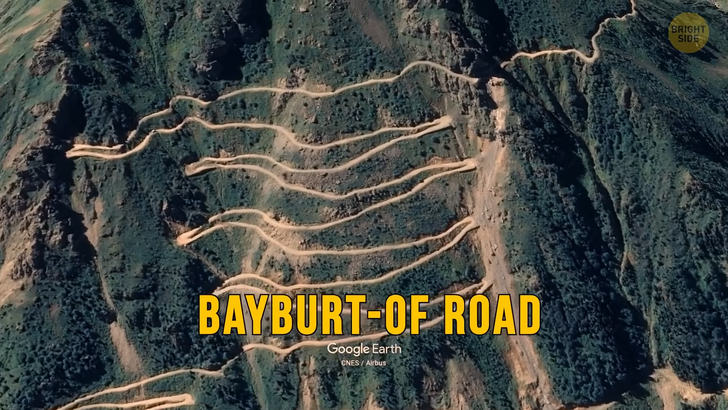
Now, let’s head to the Bayburt-Of Road in Turkey. But you should really skip this one if you’re scared of landslides or have ever experienced vertigo. This dangerous road is located on the shore of the Black Sea in the northeastern part of the country. Why is it so perilous, you might ask?
For starters, you won’t find any protective guardrails separating the road from the abyss. Apart from the spectacular view, there’s really no point in challenging yourself to go here if you’re not a professional driver. The road has a total of thirteen hairpin turns at the height of 5,600 to 6,700 feet above sea level — and all that on a stretch of a mere three miles! And the incline is also steep — up to 10%!
Morocco has a scary road of its own. It’s called the Tizi N’Test Pass. It’s a tight, winding road that goes through the Atlas Mountains. It was constructed by blasting out mountain rocks back in the 1920s. Again, it’s one of those places you should avoid if you’re afraid of heights and steep roads. But if you can deal with these tough conditions, you’ll be rewarded with amazing views.
There are no safety barriers along the road either. So it’s best to travel on it only during the day when it’s light. In the winter, landslides and avalanches are a daily occurrence there. Keep that in mind if your car is not prepared for this kind of weather.
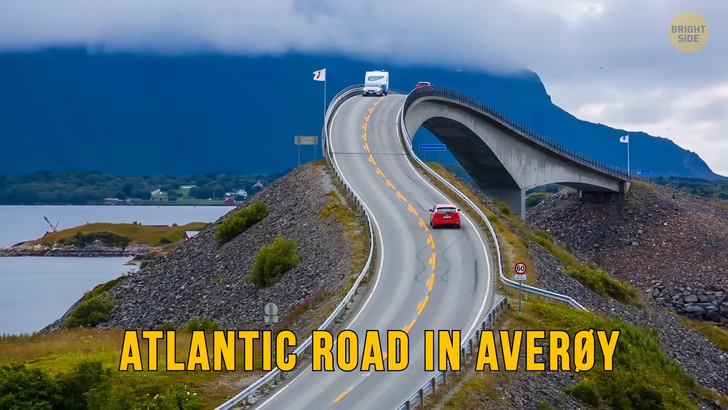
The Atlantic Road in Averøy, Norway, can offer you a real 3D experience. It winds through a small group of scenic islands in this Northern European country. But as beautiful as it might look, it’s one of Norway’s most dangerous roads. Why?
Because, at times, it makes you feel like you’re on a real-life rollercoaster! The road has a lot of twists and turns. You also need to be ready for some serious bouts of bad weather. That’s probably the reason why visibility is often reduced here. More so, if you have to drive on this road on a stormy day, you’ll have to deal with strong winds and huge waves.
Moving on, it’s often called “the best road in the world” by fans of driving, but in reality, it isn’t for the faint-hearted either. Transfagarasan is a road in Romania. And it’s probably the most famous one in this country. It winds through some of the highest mountains in this eastern European country — the Fagaras Mountains.
You won’t be able to drive on this road from late autumn to late spring, as it’s closed to the public because of frequent heavy snowfalls. Even during the summer, this road is closed from 10 pm to 6 am for additional safety. Not a fan of bears? Then you’d probably better skip this road, as bears often pop up in this location. These animals aren’t dangerous if you don’t interact with them, reach out, or offer them any food. Just the bear necessities...











